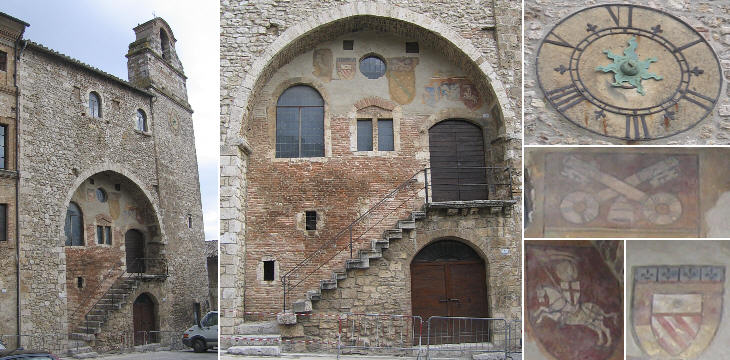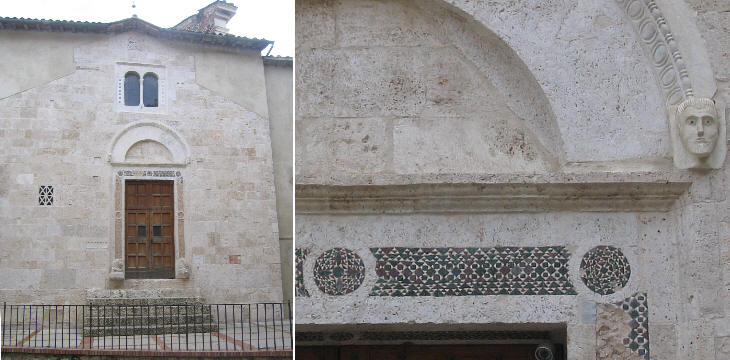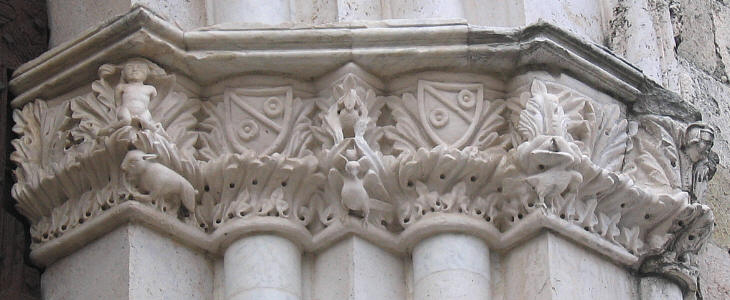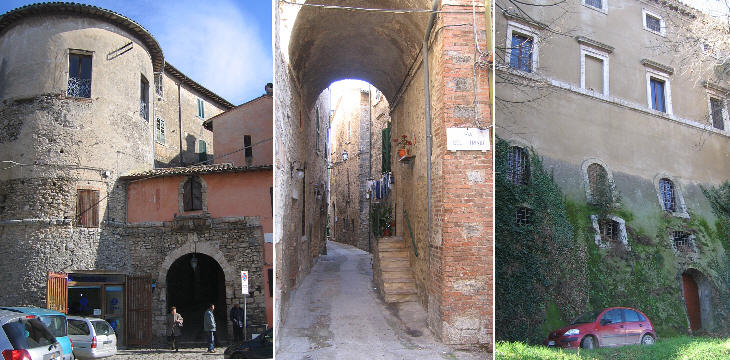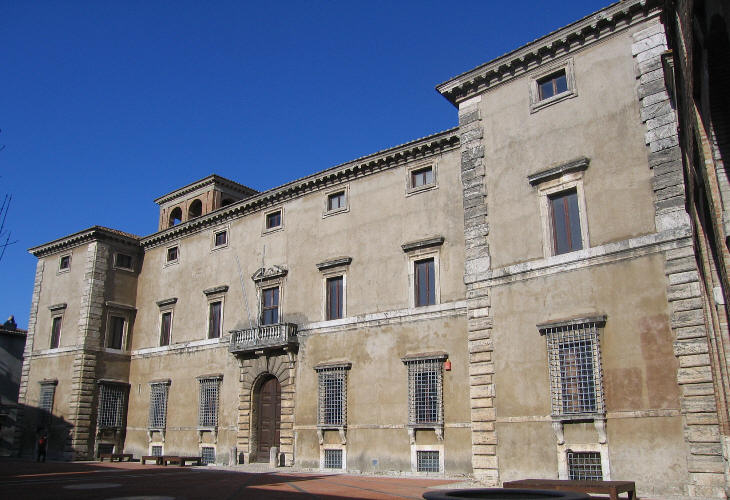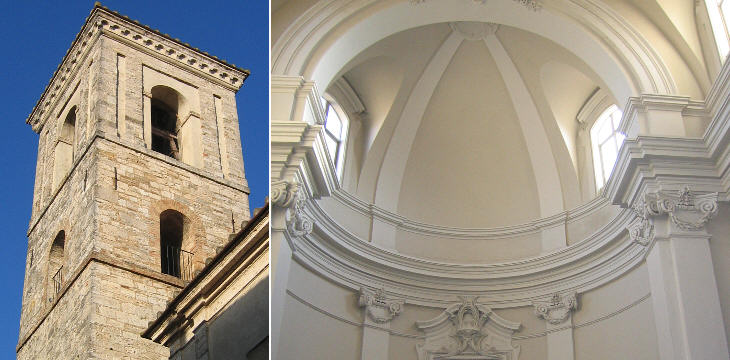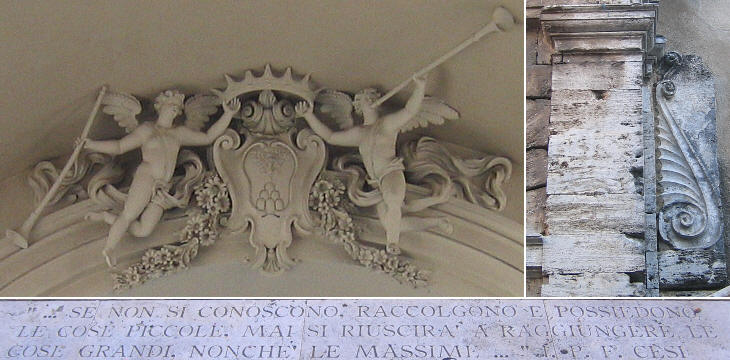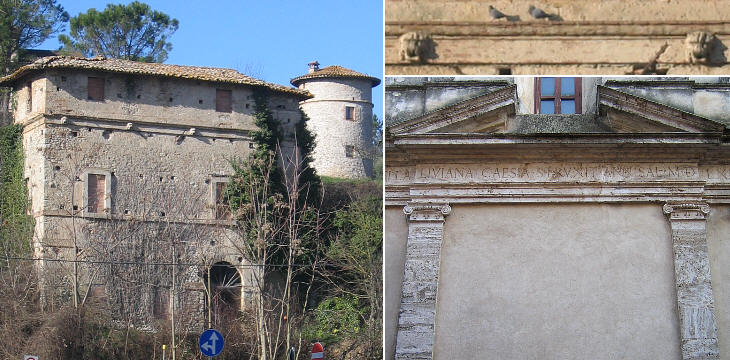  What's New! Detailed Sitemap All images © by Roberto Piperno, owner of the domain. Write to romapip@quipo.it. Text edited by Rosamie Moore. Page added in February 2008. |
Everyday a train leaves Termini: first stop: Orte; second stop: Narni; third stop Terni; fourth stop ... 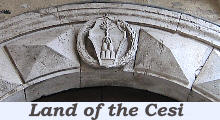 part two: San Gemini and Acquasparta part two: San Gemini and Acquasparta(Palazzo Cesi at Cesi: detail of the portal) San Gemini San Gemini owes its name to a saint who never was; there is a general consensus that Gemini (twins) was a reference to SS. Cosma e Damiano, two martyrs who were killed during the persecution ordered by Emperor Diocletian.
San Gemini is made up of a medieval part surrounded by walls with two remaining gates and of a Renaissance enlargement which was completed in the XVIIIth century with the construction of a new gate. All gates bear the coat of arms of the Santacroce who acquired Sangemini in the XVIIIth century.
The heart of medieval San Gemini is Piazza del Palazzo Vecchio (the old town hall): among the many paintings which decorate its walls, a small one portrays St. George, because at one point the inhabitants gave to their unknown patron saint the attributes of St. George (whose existence is very doubtful too). San Gemini did not belong to the Cesi, but to the Orsini; the two families however were linked, because the wife of Federico I Cesi (and the mother of Federico II Cesi) was an Orsini.
The medieval churches of San Gemini have retained many intriguing details of their original decoration; the portal of S. Francesco in particular shows an unusual mix of animals, human beings and heraldic symbols.
Acquasparta
Acquasparta was built on a low rock which per se did not provide adequate protection, so in medieval times it was surrounded by walls strengthened by round towers: its northern side housed a small rocca (fortress); these medieval aspects (including a few narrow streets and an old gate) still characterize some parts of the town.
In 1540 the Cesi acquired Acquasparta from the Farnese; in 1561 they started to build a large Renaissance palace which was completed in 1579. Federico II Cesi who was born in the Roman family palace (Palazzo Cesi alla Maschera d'Oro), spent many years at Acquasparta and in 1624 Galileo Galilei visited him.
The Cesi did not limit themselves to building an impressive family palace, they also gave Acquasparta a new large main church; its interior was decorated with elegant stuccoes.
Today the square in front of Palazzo Cesi is decorated with various inscriptions celebrating Federico II Cesi and the other members of Accademia dei Lincei. One of these sentences can prove useful when we deal with a difficult issue: "Unless we identify, gather and fully understand the small things, we will hardly be able to tackle the big ones, not to say the biggest ones..".
Interesting Late Renaissance buildings can be seen wandering in and about Acquasparta: occasionally they are in bad need of being restored. Isabella d'Alviano was a very rich woman: she married Giangiacomo Cesi in 1531; it was with her dowry that in 1540 the Cesi acquired Acquasparta; in 1581 she built a funerary chapel for the family; the image used as background for this page shows a detail of its decoration (exterior). Move on to Todi or return to page one: Introduction and Cesi. 
1864 clickable map of Umbria |

